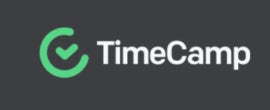The sole of every company is how productive their team is and how to achieve sustainable workflows. With the power of productivity software, you can evaluate your performance, make changes and accomplish more. The selection of software on this list can help you focus on productivity as well as pull deeper insights into your team’s real needs.
Jump to:
Top productivity apps & software comparison
In the table below, important features to help teams choose the best software are highlighted. Not every software will be perfect, but not every feature is required for you, especially in terms of cost.
| Time Tracking | Gantt charts | Automation | AI assist | Pricing | |
|---|---|---|---|---|---|
| Wrike | Yes | Yes | Yes | Yes, multi-uses | $9.80 user/month |
| Asana | Limited | Yes | Yes | Yes, writing | $10.99 user/month |
| ClickUp | Yes | Yes | Yes | Yes, writing | $7 user/month |
| TimeCamp | Yes | Yes | Yes | No | $2.99 user/month |
| Toggl Track | Yes | No | Yes | No | $9 user/month |
| Todoist | Limited | No | No | Yes, tasks and filters | $4 user/month |
| Notion | No | No | Yes | Yes, AI writing add-on | $8 user/month |
| Teamwork | Yes | Yes | Yes | Yes, predictive analytics | $5.99 user/month |
Wrike: Best for enterprise workflows

Wrike is one of the most well-known project management applications with a number of tools for increasing productivity and workflow. They offer time tracking, data visualization, automation, reporting, task management and artificial intelligence. Their free version is great for teams starting out and their two enterprise plans are great for large organizations.
Pricing
- Free: Unlimited users and 2GB of storage space.
- Team: $9.80 user/month billed annually.
- Business: $24.80 user/month billed annually.
- Enterprise: Enterprise-level security, see sales for more.
- Pinnacle: Advanced analytics for complex data, see sales for more.
Features
- Work views like calendars, Gantt charts, tables and kanban.
- Advanced reporting with analytics view.
- AI for smart search, text and tasks.
- Workflow automation in paid plans.
- Time tracking, resource assignment and workload charts to manage resources.
- Collaborator and guest users for unified communication.
Pros
- Plenty of powerful features like AI and business intelligence insights.
- Great for managing real-time projects, time and resources.
Cons
- Paid tiers can be costly for small teams.
- Less storage than other software.
For more information, read the full Wrike review.
Asana: Best for workflow and timeline management

One of the most popular project management tools with plenty of tools for reporting, automation and project management. You can see timelines, set task dependencies, use templates, build workflows and use their intelligence tools for editing. Teams with long-term projects and important deadlines can benefit greatly from the application.
Pricing
- Basic: Free for small teams, unlimited projects and messaging.
- Premium: $10.99 user/month billed annually, or $13.49 billed monthly.
- Business: $24.99 user/month billed annually, or $30.49 billed monthly.
- Enterprise: For bigger teams with plenty of data, see sales for more information.
Features
- Multiple work views like Gantt charts and calendar views.
- Project tracking tools from timelines, due dates, easy assigning, custom rules and milestones.
- Approvals and task dependencies to keep project order.
- Unlimited free guests in paid tiers.
- Workflow automation via rules and bundles.
Pros
- Brimming with features to streamline workflows and stay on top of projects.
- Multi-factor authentication for all plans.
Cons
- Time tracking is only offered via integrations until the Business tier.
- Can get costly the more users you have.
For more information, check out our full Asana review.
ClickUp: Best for workflow management

ClickUp is both a feature-rich and affordable project management solution. It has a plethora of capabilities to improve workflows and keep teams on track. In the app, you can find a variety of work views, Agile workflows, task management, automation, reporting and collaboration tools. ClickUp is great for teams with a lot to accomplish.
Pricing
- Free: Unlimited tasks and users.
- Unlimited: $7 user/month billed annually, or $10 billed monthly.
- Business: $12 user/month billed annually, or $19 billed monthly.
- Enterprise: More support and security, see sales for more information.
Features
- 15 different work visualizations including list, calendar, map and Gantt.
- Advanced reporting options including sprints, time, milestones and progress.
- Over 50 native integrations and Zapier to connect with more apps.
- Variety of channels and options for collaboration like guest users, user tagging, sharing and emailing.
- Project customization and task automation.
Pros
- Easy to get started with and affordable for diverse team sizes.
- Paid plans have either limited or full access to all 15 work views.
- Two-factor authentication in all tiers.
Cons
- Limited access to important features across tiers including integration and collaboration tools.
- Only Enterprise plan has more than chat support.
For more information, read the full ClickUp review.
TimeCamp: Best for complex time management

TimeCamp is an extremely packed time management solution for productivity. You can use their time tracking tools for employee time tracking, budgeting, reporting and project organization. The application is also budget-friendly and allows unlimited users in their Free subscription. Teams will be able to test out the app’s productivity features before making big commitments.
Pricing
- Free: Allows unlimited users and unlimited projects.
- Starter: $2.99 user/month billed annually, or $3.99 billed monthly.
- Premium: $4.99 user/month billed annually, or $6.99 billed monthly.
- Ultimate: $7.99 user/month billed annually, or $10.99 billed monthly.
- Enterprise: More data privacy, support and training, see sales for more information.
Features
- Offers calendar views and personal timelines.
- Filled with time management tools like idle time tracking, overtime tracking, billable time tracking, budgeting and more.
- Unlimited projects, tasks and teams to accommodate most workloads.
- Website and window tracking.
- GPS tracking and geoconferencing.
Pros
- Their Free plan is stacked with time management, project templates, unlimited users and even email support.
- More affordable than other time productivity solutions.
- Unlimited projects, tasks and users for all plans.
Cons
- Billing, management and reporting capabilities are limited across plan tiers.
- Only the Enterprise plan has in-depth support features.
- Privacy and security features are limited to higher tiers.
- Runs the risk of micromanagement with detailed time tracking.
For other options, check out our list of the best time tracking software.
Toggl Track: Best for employee time tracking

If time is the center of your workflows and your main concern then a time management solution like Toggle Track may be the right choice for you. The platform offers detailed time tracking, reporting and team management tools. You will be able to stay on top of billable and nonbillable time spent and draw new insights from workloads.
Pricing
- Free: Allows 5 users, unlimited time tracking and unlimited projects.
- Starter: $9 user/month billed annually, or $10 billed monthly.
- Premium: $18 user/month billed annually, or $20 billed monthly.
- Enterprise: Customized features, see sales for more information.
Features
- Ability to see projects, clients and your team by list and weekly views.
- Advanced time tracking capabilities such as automated tracking, personal tracking and even browser extensions.
- Customizable reports along with exporting and sharing of reports.
- Project management with templates, predictive analysis, client profiles and project budgeting.
Pros
- Free plan has access to most time tracking features.
- Offers idle time detection so you don’t track the time you weren’t working.
Cons
- Integrations, time management and reporting are limited across plan tiers.
- It can get costly the more team members you add.
- Detailed time-tracking tools run the risk of micromanaging when used improperly.
Todoist: Best for simple collaboration

Most project management tools for productivity are going to be saturated with great features, but will require more to learn. If you want to manage work and stay productive but avoid complicated software then Todoist is worth a look. The tool is affordable and offers simple collaboration and task management for individuals and teams.
Pricing
- Beginner: Free for one user, allows 5 active projects.
- Pro: $4 user/month billed annually, or $5 billed monthly.
- Business: $6 user/month billed annually, or $8 billed monthly.
Features
- List and kanban work views.
- AI assistant for task management and filtering.
- Task time tracking to stay on top of workflows.
- Theme customization to improve workspace.
- Ability to save project space by having active projects and draft projects.
- Advanced role permissions, guest users and centralized billing for contractor management.
Pros
- Offers team workspaces with unlimited members and guests in the Business plan.
- Affordable plans for both big and small teamwork.
- 300 projects and 150 filter views in paid plans.
Cons
- Both Beginner and Pro plans are for one user and don’t have team workspaces.
- No longer offers one of their two free plans that had more business features.
- Very bare compared to other productivity tools.
For more information, read the full Todoist review.
Notion: Best for online collaboration

Notion is a great tool for virtual collaboration and communication. The web application is great for ensuring your team stays on the same page and effectively communicates changes in workflow. Whether you’re remote, hybrid or in-person, you can use Notion to improve virtual productivity and workflows.
Pricing
- Free: Unlimited blocks for one user.
- Plus: $8 user/month billed annually, or $10 billed monthly.
- Business: $15 user/month billed annually, or $18 billed monthly.
- Enterprise: More support and customization, see sales to learn more.
Features
- Work views like list, kanban and table.
- Collaborative workspaces for teams in all plans.
- Automation for workflow and databases.
- Public API to build custom integrations with your favorite apps.
- Database syncing and link previews.
Pros
- Great for collaboration and organizing workspaces.
- Ability to have 10 guests in Free plan and up to 100 in Plus plan.
- Priority support for all paid plans.
Cons
- Most security, admin and analytics are in the Enterprise tier.
- Limited security across plan tiers.
For more information, check out our full Notion review.
Teamwork: Best for managing team performance

For companies that want to improve employees’ work-life balance and overall performance, Teamwork has myriad features to do so. The application has capabilities for managing time, resources, budgets, projects, communication and team needs. If team productivity is the heart of your company then Teamwork is a good solution to consider.
Pricing
- Free: allows 5 users and 5 projects.
- Starter: $5.99 user/month billed annually, or $8.99 billed monthly.
- Deliver: $9.99 user/month billed annually, or $13.99 billed monthly.
- Grow: $19.99 user/month billed annually, or $25.99 billed monthly.
- Scale: More advanced client management, see sales to learn more.
Features
- List, table and Gantt work views.
- Popular integrations like Google Drive, Microsoft Office, Quickbooks and Zapier.
- Time management via time tracking, time estimates, reminders and billable time tracking.
- Budget management for time, expenses, invoices and tasks.
- Client management and client user types.
- Team resource management for managing employee workloads.
- Project management tools like templates, collaborator users, team chats and even automation.
- Detailed project reporting for time, health and status of workloads.
Pros
- Extremely feature-rich.
- All paid plans have phone, chat and email support.
- All plans have access to mobile versions.
- Great for teams that also manage clients.
Cons
- Learning curve with all the features you would need to learn.
- Minimum user requirements for paid plans.
- Only 100MB of storage in the Free plan.
For more information, read the full Teamwork review.
Key features of productivity software
When it comes to productivity, there are definitely factors with a huge impact on how much work you get done. Time, communication and interpretations are common themes you will see in popular features. We explore some of those capabilities, but obviously, you may have different key features in mind. Regardless, these are helpful criteria for sorting through all the different options.
Time tracking
Time management is one of the most valuable features and one of the most costly, being usually pushed to more expensive app tiers. With time insights, you can track task duration, employee time, project time, billable time and much more.
Teams that can determine which tasks take longer can then plan for more time in the future or problem-solve ways to reduce effort spent. The same goes for employee time management, you can use those insights to avoid burning out your time by giving them either more time or more resources to reduce strain.
Gantt charts
A Gantt chart is one of the most sought-after work visualizations because it offers a timeline of due dates for tasks or projects along with those in charge of each part. It offers you a macro view of progress as well as predictive insights for how future workflows will turn out. If you want to monitor productivity, it’s one of the best features to have.
Automation
For some teams, the most effective way to increase productivity is to automate repetitive tasks like scheduling and notifications. You can ensure workflow progresses while everyone stays informed. Other helpful automation can be for reporting to ensure important insights are accessed in time for reviews.
AI assistance
One super powerful feature for business solutions is artificial intelligence. It can be editing and writing tools for emails and reports, workflow assistance, making estimates on productivity or generating predictive analytics based on past actions. You can think of it as a built-in assistant taking notes on what you do and flagging areas for improvement, which is absolutely a high benefit for productivity.
Performance reporting
The end result of great productivity is performance. While achieving new progress requires changes before the performance report comes out, important conclusions can still be drawn after the fact. Being able to see how you and your team perform is a learning opportunity in itself. It’s also more effective if you run performance reports consistently before all work and projects are done, so you can see if your team is slowing down.
How do I choose the best productivity apps for my business?
Most project management or time management systems have automation, data visualization or reporting to monitor actions and draw insights. The big decision comes down to the other features you need.
Some of the software on this list is designed for very specific needs, such as Toggl Track and TimeCamp, being centered around time management. Tools that manage time but have more in-depth features for automation and project management include Wrike, Teamwork and ClickUp.
Other apps are simpler and easier to get started with, like Notion and Todoist. If you’re not sure of the exact areas you need to improve, then Asana, ClickUp, Teamwork and Wrike are packed with enough capabilities to add value as you figure out what your team needs.
In the end, the best thing you can do is explore any free plans, look for online tutorials and get your team’s opinions before buying.
Methodology
We evaluated software in terms of affordability, special features and potential to help teams make changes or decisions about productivity. Time tracking was one of the biggest considerations because it’s one of the most effective insights for productivity but it was not prioritized over simpler software that can still offer value for growing teams. Affordability and free plans were also looked at so that the selection would keep in mind the needs of different team sizes.
Source of Article



